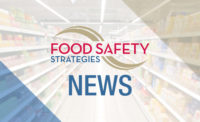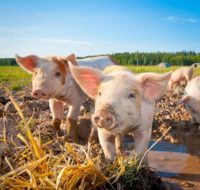The globalization of trade, which has contributed to food availability and diversification throughout the world, has increased the chances that the food produced in one place will affect the health and diet of people living in another. Changes in human behavior or practice in food production and consumption have led to changes in the occurrence of food pathogens as well as mycotoxins, and have also raised emerging problems of food safety and nutrition as well as food security. As a result, global actions across borders to ensure food safety as integral to food and nutrition security have become more important than ever before. Such actions include the establishment of evidence-based international standards on food safety and nutrition. Since its launch in 1963, the Codex Alimentarius Commission (CAC) has developed hundreds of such standards and provided guidance for improving food safety and nutrition in each of its Member States and globally.
Objectives and History
Codex Alimentarius, the name of the Commission’s “bible” of standards, means, in Latin, “Food Law or Code.” The Commission was established by a resolution of both the World Health Assembly and the Food and Agriculture Organization of the United Nations (FAO) Conference to protect the health of consumers and ensure fair practices in food trade through the development of international standards, recommendations and codes of practices. It is the principal body of the Joint FAO/World Health Organization (WHO) Food Standards Programme.[1]
Currently, the Commission has 186 members [185 member countries and 1 member organization (EU)], which covers 99 percent of the world’s population, and over 200 observers (international governmental organizations, nongovernmental organizations and United Nations agencies).
The Commission develops not only international food safety and nutrition standards (e.g., maximum use levels for food additives, maximum limits for contaminants such as heavy metals) but also quality standards, guidelines and codes of practice. Its standards and related texts cover an impressively wide range of subjects of international relevance having to do with biotechnology, pesticides, pathogens, additives and contaminants, food labeling, reference values for nutrients (particularly those related to the risk of noncommunicable diseases) and many other horizontal areas, but also to specify and define particular foods to ensure their identity and quality. In 1995, the World Trade Organization (WTO) Agreement on the Application of Sanitary and Phytosanitary Measures called on members of the WTO to harmonize their national regulations to Codex standards,[2] which have since become international benchmarks for food safety. Furthermore, Codex standards other than those addressing food safety are relevant under the WTO Agreement on Technical Barriers to Trade.
In 2002, WHO and FAO conducted a broad-ranging evaluation of the Codex Alimentarius and other FAO and WHO Food Standards work, including capacity building and expert scientific advice as a basis for Codex safety and nutrition standards. Based on the resulting recommendations, the Commission recognized the need to ensure: a) greater efficiency and effectiveness in the development of the standards, with transparency and inclusiveness and procedural consistency; b) increased participation of developing member countries in the Codex work; c) greater usefulness of the standards to the members in terms of relevance to their needs and timeliness; d) a stronger scientific base for risk analysis; and e) more effective capacity building for the development of national food control systems.[3]
Since the evaluation, the Commission has evolved in an open, transparent and inclusive way to meet emerging challenges on food safety and nutrition.
Although Codex standards are often viewed as “trade standards,” their primary purpose is to protect consumers’ health by ensuring the safety, nutritional and other qualities of food products traded worldwide. The importance of this work is evidenced by the large burden of food- and diet-related disorders and illness. Food- and waterborne diarrheal diseases kill an estimated 2.2 million people annually, most of them children,[4] and food containing harmful levels of chemicals can cause serious long-term health problems, including cancer. Excessive intake of calories can lead to obesity and to conditions such as diabetes mellitus, coronary heart disease, cancer, hypertension and stroke.[5, 6] On the other hand, lack of sufficient food and micronutrient deficiencies also cause enormous numbers of deaths and disability. Stunting, a mark of chronic undernutrition, affects 165 million children younger than 5 years, and an estimated 35 percent of all deaths among children in this age group are associated with undernutrition.[7] Foodborne diseases and malnutrition undermine not only human health and productivity but also countries’ potential for sustainable development.
The year 2013 marked the 50th anniversary of the CAC, and to commemorate this event, the Directors General of FAO and WHO attended its session in July.
Codex Trust Fund
In response to the 2002 evaluation, the Directors General of WHO and FAO launched the FAO/WHO Project and Fund for Enhanced Participation in Codex (Codex Trust Fund)[8] on February 14, 2003, with the objective of helping developing and transition-economy countries enhance their level of effective participation in the CAC. The Codex Trust Fund is achieving this goal primarily by providing resources for eligible countries to participate in Codex meetings, by facilitating training courses and also by enabling the preparation of scientific and technical data to feed into the Codex standard-setting process.
How It Works
The Commission’s work is supported by some 20 subsidiary bodies, which are General Subject Committees (Codex Committees on Contaminants in Foods, on Food Additives, on Food Hygiene, etc.), Commodity Committees (Codex Committees on Fish and Fishery Products, on Fresh Fruits and Vegetables, etc.) and Regional Coordinating Committees.[1] Depending on the standard-setting need, the subsidiary bodies are kept active or made dormant, or new bodies are created in a time-bound manner to address an emerging issue. The international food safety and nutrition standards and recommendations, guidelines and codes of practice are usually drafted by a General Subject Committee and adopted by the Commission at its annual meeting held in July, alternately in Rome or Geneva. Each Codex Committee is hosted by a national government, which provides a Chair, and is serviced by a joint FAO/WHO Codex Secretariat based in Rome.[9]
Codex standards and guidelines have been developed in line with emerging food safety and nutrition issues as well as new scientific knowledge and food technologies. For example, the Codex Ad Hoc Intergovernmental Task Force on Food Derived from Biotechnology (1999–2003 and 2004–2008) has provided guidance to ensure the safety of foods derived from new biotechnologies such as recombinant DNA techniques, which were introduced in the market in the mid-1990s.[10]
Furthermore, the standards have taken account of updated risk management systems such as Hazard Analysis and Critical Control Points, test methods and risk-based sampling plans to target hazards in foods as they have evolved.
To underpin the science-based standard-setting process by the Commission, WHO and FAO have provided scientific advice for this work over the decades.
The Scientific Basis of Codex Standards
The Commission has benefited from the scientific and technical advice provided by WHO and FAO. Jointly, FAO and WHO convene international expert meetings to address emerging or emergency issues and provide independent risk assessments. The recommendations from these meetings feed directly into the Commission’s standard-setting process. Four expert groups meet regularly: The Joint FAO/WHO Expert Committee on Food Additives[11] has carried out risk assessments related to food additives, contaminants, natural toxins and veterinary drug residues in food since 1956; the Joint FAO/WHO Meeting on Pesticide Residues[12] has assessed the potential health effects of pesticide residues since 1963 and recommends safe maximum residue levels for specific food commodities; the Joint FAO/WHO Expert Meeting on Microbiological Risk Assessment[13] has focused since 2000 on risk assessments for selected pathogen-commodity combinations; and the Joint FAO/WHO Expert Meeting on Nutrition[14] provides scientific advice on nutritional matters. Besides these long-standing programs, many ad hoc expert consultations have been convened to address emerging food safety issues such as the health concerns over exposure to acrylamide, melamine or bisphenol A.
 The relationship between Codex and the FAO/WHO scientific advice program is based on a risk analysis framework. It is made up of three components: risk assessment, risk management and risk communication. At an international level, FAO/WHO expert bodies take the role of risk assessor to provide the scientific bases of risk management and policymaking. The CAC takes the role of risk manager who decides on international food safety and nutrition policies and recommendations, also taking into consideration the circumstances of food production in the world and the socioeconomic impact of the proposed standards. Risk communication is an activity of interactive exchange of information and opinions concerning risks and involves all stakeholders in the whole risk analysis process (Figure 1).
The relationship between Codex and the FAO/WHO scientific advice program is based on a risk analysis framework. It is made up of three components: risk assessment, risk management and risk communication. At an international level, FAO/WHO expert bodies take the role of risk assessor to provide the scientific bases of risk management and policymaking. The CAC takes the role of risk manager who decides on international food safety and nutrition policies and recommendations, also taking into consideration the circumstances of food production in the world and the socioeconomic impact of the proposed standards. Risk communication is an activity of interactive exchange of information and opinions concerning risks and involves all stakeholders in the whole risk analysis process (Figure 1).
WHO and FAO have provided a variety of scientific advice for Codex and other international/regional/national work relevant to ensuring food safety and nutrition. For example:
• Development and update of risk assessment methodologies: hazard identification, hazard characterization, exposure assessment and risk characterization for chemical and microbiological hazards in foods, risk ranking to prioritize hazards to be addressed by risk managers
• Applied risk assessment for specific food hazards: safe exposure limits for chemical hazards (e.g., acceptable daily intake, tolerable daily intake), risk of microbiological hazards in particular foods (e.g., Listeria monocytogenes in ready-to-eat foods), nutritional requirements and recommended nutrient intake
• Data collection and information sharing: Global Environment Monitoring System – Food Contamination Monitoring and Assessment Program (GEMS/food) compiling levels and trends of contaminants in food globally, their contribution to total human exposure and significance with regard to public health and trade
Besides feeding into the Codex standard-setting process, these tools are also utilized by national/regional authorities as a basis for standard setting in food safety and nutrition.
Future Challenges
As the CAC celebrates 50 years of successful work, it may be a good time to reflect on its trajectory and how it can serve the public interest even better. This includes consideration of how Codex work can support members in tackling important public health topics such as the fight against the increasing global burden of noncommunicable diseases. Over the years, the Commission has become more inclusive. Thanks to the Codex Trust Fund, more countries in development and with economies in transition are actively participating in the Commission’s work. The openness, transparency and clarity of its reporting and prioritization procedures have been improved. Nonetheless, today’s rapid changes in trade, travel and commerce call for an international standard-setting system that is able to respond more quickly to new situations. As a consequence, a review of current Codex work management is warranted, including the impact of so many Codex Committees, task forces and working groups on national Codex structures. Other aspects that need to be considered include the impact of the proliferation of bilateral and regional agreements on global standards, and the relevance and impact of private standards on the global process.
In addition, the evolution of food technologies and risk analysis methodologies increases the complexity of science advice requested from the Commission, which increases the workload of FAO/WHO expert bodies. Moreover, the need to address real-life scenarios in exposure to multiple compounds through multiple routes requires improved risk assessment approaches to better advise risk management decisions. An ongoing challenge is sufficient resourcing of the scientific advice programs in support of Codex work, and the Commission is actively seeking ways to improve the situation. The Commission and FAO/WHO continue their effort to manage the issue by prioritizing the work that needs FAO/WHO advice and by considering several options to secure more sustainable funding while ensuring independence, impartiality and integrity of the process.[15]
Furthermore, as scientific advice has become more complex, member countries, especially developing countries, have expressed their concern about the difficulty in understanding and interpreting it. Information about scientific advice needs to be more easily accessible, understandable and applicable. Some web-based materials such as FOSCOLLAB (a WHO platform for food safety professionals) and a microbiological risk management tool for the control of Campylobacter and Salmonella in chicken meat have been developed as interactive tools.
The current Codex Trust Fund will end in December 2015, and there is overwhelming support for a successor initiative. Preliminary discussions indicate the wish for more tailored support to countries. The development of a proposal is underway and will be discussed at regional and global levels.
Finally, stronger support of national Codex contact points and strengthening of national Codex structures are needed not only to enhance the work of the Commission and its subsidiary bodies, but also to strengthen implementation of Codex standards and related texts at a national level. Achieving this will require heightened political will and an acknowledgement of the importance of food safety and nutrition in public health. Closer collaboration between the different sectors associated with food safety and nutrition at the national/regional level is required, and strengthened interactions between the Commission and other global players will be essential to transform the Commission into a modern organization adapted to current needs.
Mina Kojima, D.V.M., worked as a technical official for food safety at the Ministry of Health, Labor and Welfare of Japan. Significantly, she was in charge of the safety of imported food and foodborne disease investigation. She joined WHO in 2012 and is now responsible for the Secretariat of the Joint FAO/WHO Expert Meeting on Microbiological Risk Assessment and internal coordination on meetings of the CAC. Her main interests are in the area of food safety and foodborne diseases.
Angelika Tritscher, Ph.D., conducted research in carcinogenesis and human health risk assessment at the National Institute of Environmental Health Sciences in the U.S., followed by applied toxicology in food safety at the Nestlé Research Center in Switzerland. She joined WHO in 2003, and, in the Department of Food Safety and Zoonoses, she now heads the unit on Risk Assessment and Management, with responsibilities in risk assessment and evidence-based risk management measures along the food chain, in support of the CAC’s work in developing international food safety standards. She is a board-certified toxicologist, a member of several national and international professional toxicology societies and has published over 50 peer-reviewed papers and several book chapters. Her main research interests are in the area of toxicology and risk assessment, food safety and environmental influence on human health.
References
1. www.codexalimentarius.org/.
2. www.wto.org/english/tratop_e/sps_e/spsagr_e.htm.
3. www.codexalimentarius.org/about-codex/codex-timeline/en/.
4. www.who.int/foodsafety/areas_work/foodborne-diseases/en/.
5. www.fao.org/docrep/005/ac911e/ac911e00.HTM.
6. www.who.int/nmh/publications/ncd_report2010/en/index.html.
7. www.who.int/nutgrowthdb/estimates2012/en/.
8. www.who.int/foodsafety/areas_work/food-standard/codextrustfund/en/.
9. ftp://ftp.fao.org/codex/Publications/ProcManuals/Manual_22e.pdf.
10. www.codexalimentarius.org/committees-and-task-forces/en/?provide=committeeDetail&idList=24.
11. www.who.int/foodsafety/areas_work/chemical-risks/jecfa/en/.
12. www.who.int/foodsafety/areas_work/chemical-risks/jmpr/en/.
13. www.who.int/foodsafety/areas_work/microbiological-risks/jemra/en/.
14. www.who.int/nutrition/en/.
15. www.codexalimentarius.org/input/download/report/801/REP13_CAC3.pdf.
Codex Alimentarius Commission: Ensuring Food Safety and Nutrition Security for Over 50 Years




